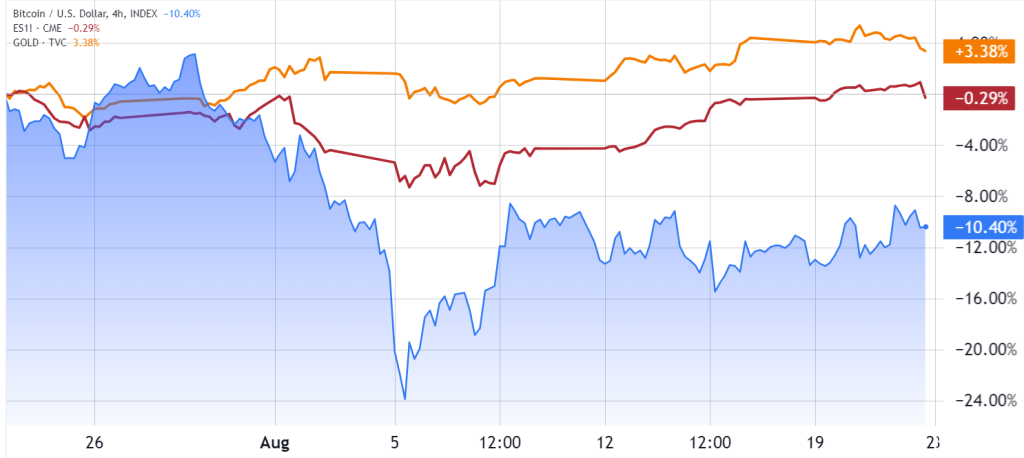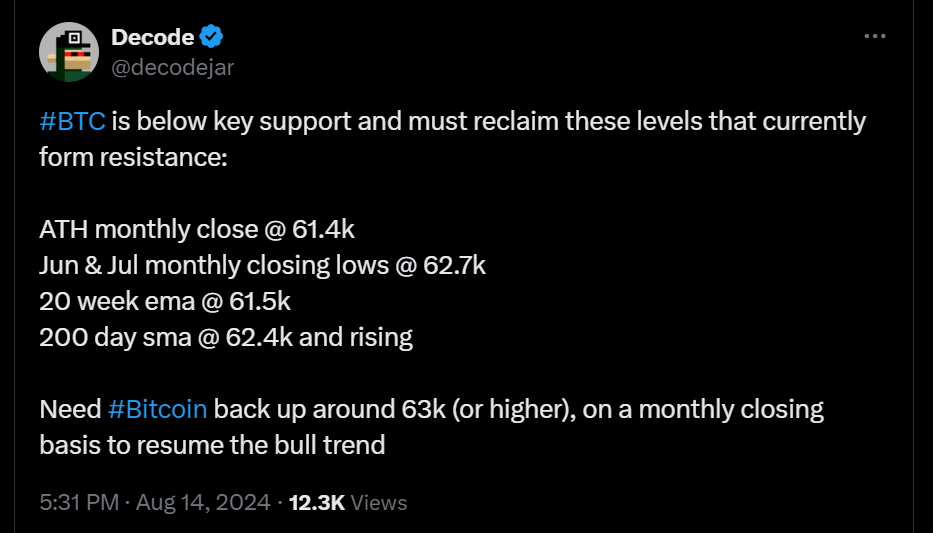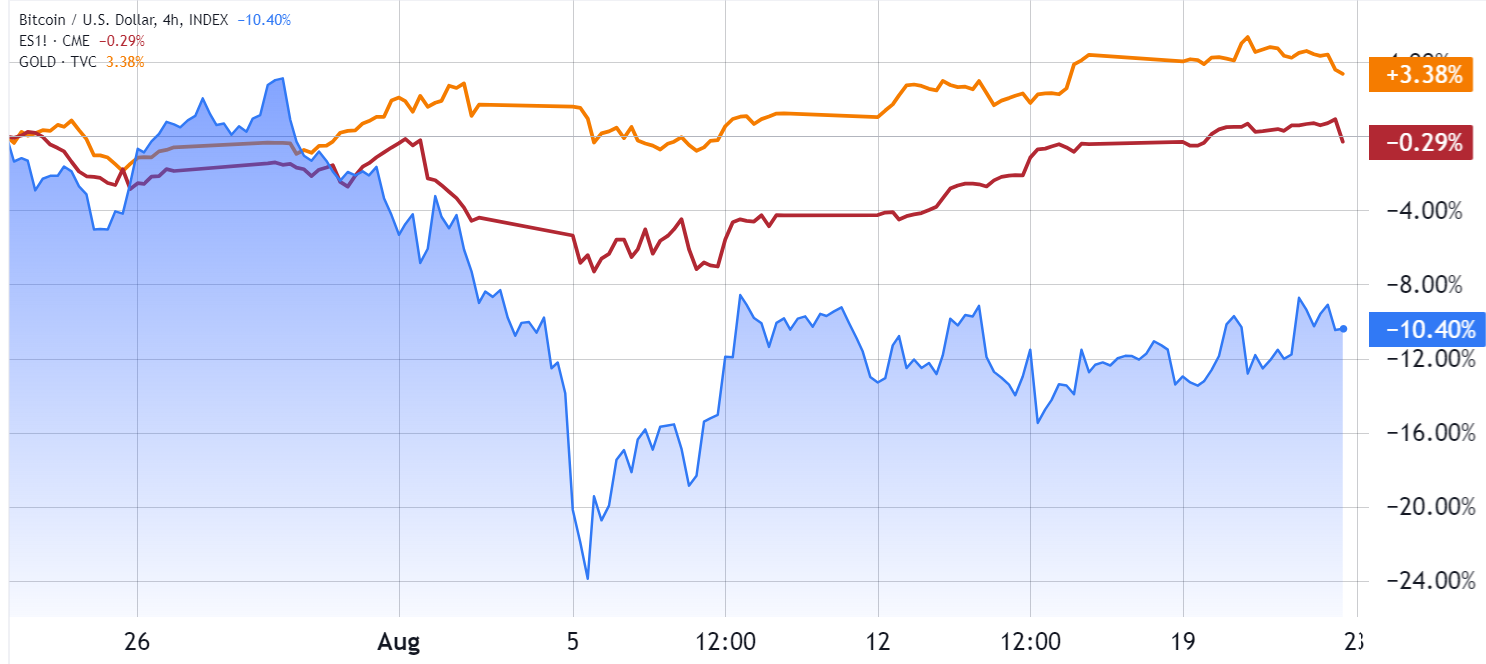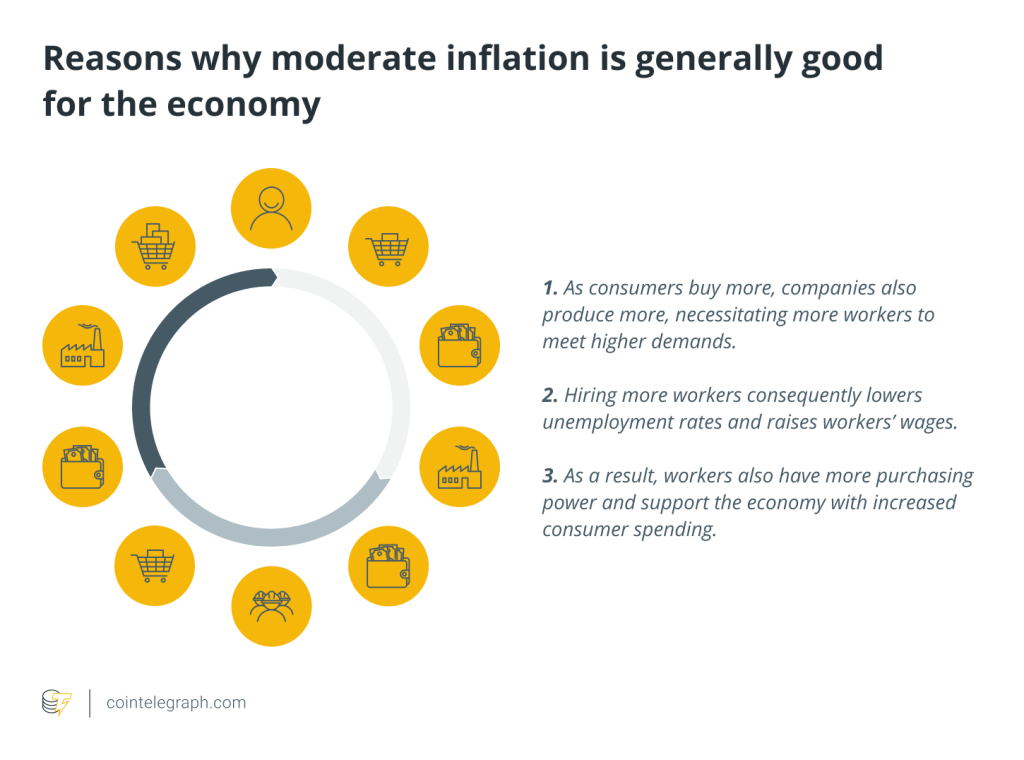Bitcoin is holding $60K — Here’s why it’s important

Resilient US job and inflation data and steady spot Bitcoin ETF inflows aided Bitcoin’s rally above $60,000.
Bitcoin (BTC) gained 4% between Aug. 21 and Aug. 22, and despite losing some momentum, it has sustained the $60,000 support. Some analysts argue that a break above the $62,000 resistance is necessary to confirm a bullish trend. However, given the market’s confidence in the United States Federal Reserve (Fed) implementing expansionary measures, the odds still favor Bitcoin bulls.
Bitcoin’s fundamentals and spot ETF flows remain solid
Bitcoin analyst and investor Decode believes that BTC’s price must break above the 200-day moving average, especially at the monthly close, to “resume the bull trend.”

Source: decodejar
However, Decode adds that Bitcoin “seems to have lost momentum for now, […] so, August – September looks most likely a continuation of the boring zone, but I am bullish on Q4 and ready to be surprised.”
In essence, investors remain bullish for the medium term but do not foresee an immediate catalyst to close the gap between Bitcoin and traditional markets.
Investors anticipate that the Federal Open Market Committee (FOMC) will cut interest rates at the next meeting scheduled to conclude on Sept. 18. Some economists believe there is potential for a 0.50% rate cut, which would be considered aggressive and typically favorable for risk-on markets.
Such a cut would lower the compensation for fixed-income investments like US Treasuries and reduce the cost of capital for companies. Even a 0.25% rate cut would signal to the market that the most severe phase of monetary tightening is behind us.

Bitcoin (blue) vs. gold (orange) vs. S&P futures (red). Source: TradingView
Some traders might note that the S&P 500 is trading just 1% below its all-time high, and even gold, often considered the world’s most reliable store of value, reached its highest-ever mark on Aug. 20. In contrast, Bitcoin remains 16% below its June 2024 historical high of $71,943. This discrepancy partly stems from differing risk perceptions. Stocks offer a cushion through dividends and strong balance sheets, while gold is viewed as a hedge.
Meanwhile, Bitcoin continues to struggle to establish itself as an uncorrelated asset that serves multiple purposes. For example, global gold ETFs hold $246.2 billion in assets under management, according to gold.org, while spot Bitcoin instruments, including ETFs and ETNs, total $66.6 billion, according to CoinShares. Despite Bitcoin’s intrinsic properties of censorship resistance and a fixed monetary policy, it still has a long way to go to solidify its presence in traditional financial markets.
This disparity in risk perception explains why gold’s rise to $2,531 was not mirrored in Bitcoin’s performance. While investors are certainly concerned about the US government’s fiscal debt and are seeking protection in scarce assets, most are not yet ready to fully embrace an independent digital currency. However, recent inflows into spot Bitcoin ETFs suggest a promising path forward. These instruments captured $226 million in net inflows during the four trading days ending Aug. 21, indicating growing interest once initial barriers are overcome.
Related: Crypto firms contributed 48% of all corporate political donations in 2024: Report
Bitcoin could benefit from a constructive regulatory approach
In addition to macroeconomic trends, the cryptocurrency industry is seeing a more favorable outlook as the US presidential elections in November approach. Candidates have strong incentives to publicly support the digital finance industry, regardless of their actual intentions. An Aug. 21 Bloomberg report indicated that the Democratic presidential nominee Kamala Harris has reportedly pledged to support the continued growth of the crypto industry.
Ultimately, as long as US employment and inflation data remain neutral to positive, the likelihood of a less stringent monetary policy from the Fed increases. This could help reduce government spending on debt repayment, but it may also weaken the domestic currency as investors seek better fixed-income opportunities elsewhere. Consequently, Bitcoin’s prospects for breaking above $62,000 before year-end remain solid.







Responses